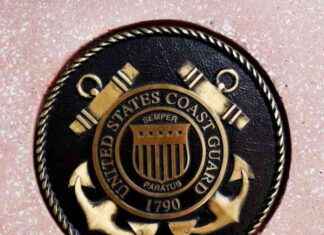Matt Moore wants to make one thing clear: he’s not an alarmist.
In his 22 years of surfing, he’s had 13 shark encounters – thankfully none too close and personal. But he’s seen enough great whites over the years to make it a “no-brainer” to spend several hundred bucks on the latest shark-repellent technology.
And after an 8-foot great white was caught off shore in Sunset Beach, Tuesday, he might not be the only one looking to safe-guard a surf session.
He’s simply a realist, he says, who doesn’t want to take chances.
“I’m just aware of my surroundings. The mass majority of surfers that are out recreating, and there’s a lot of them, they are kind of clueless. They may have never had an encounter,” he said. “I’ve just reached my limit.”
The Long Beach resident spent years surfing colder, sharkier waters in Northern California, but he now paddles out each morning in Orange County on his way to work in Irvine.
He ticks off a list of times he’s seen sharks while surfing.
There was the time he was surfing in Humboldt, in Northern California, and just as he got out of the water he saw a great white eating a seal. He also saw two sharks while out surfing in Marin County, north of San Francisco – one of the reasons he packed his bags and moved to Southern California.
But even here, Moore can’t seem to shake them.
Three weeks ago, he saw a shark fin pop out of the water at Bolsa Chica – he’s seen enough to recognize the notch on the shark’s fin. He thinks it was a 7- to 8-footer, similar in size to the one caught and released off Sunset Beach earlier this week.
Last summer, when Shark Shield introduced its latest shark deterrent technology – a decal sticker with an antenna to place on the bottom of the surfboard, teamed with a traction pad that holds the battery – Moore didn’t hesitate Maksibet to spend the $599 for the product.
“The technology, from an engineering standpoint, it’s light and there’s no drag,” he said. “You never really notice it’s there.”
The Shark Shield Moore has on his board is made in Western Australia, where great white sharks have killed 10 people since 2010. The technology prays on the sharks’ heightened sensitivity to close-range, low-frequency electrical fields. Shark Shield has two electrodes that emit an electrical field that surrounds the user. When a shark comes within a few meters of the shield, the strong electronic pulses emitted by the device cause the shark to experience muscle spasms.
There are a few other products on the market that similarly tout the ability to keep sharks at bay.
One, Shark Spray ($29.99), extracts putrefied shark tissues, emitting a chemical signal. When released, the cloud of repellent sends a danger signal to sharks in the vicinity, indicating that a predator could be nearby, creating a temporary safety zone for the user.
Another product, Sharkbanz, was created by surfers Nathan Garrison and David Garrison who wanted a simple, stylish product for ocean-users who have surfed in murky waters, wondering what lurked below. The technology comes in a wrist band (from $55 to $65), or on a leash ($180).
The company teamed with shark experts and scientists at SharkDefense Technologies to create a magnetic technology to deter sharks from attacking people.
Sharks rely on their electro-receptors instead of their eyes to “see” what’s around them, the company’s website explains. As the shark approaches a person wearing Sharkbanz, magnetic waves coming from the band disrupt its electro-receptors and it turns away.
Of course, there’s a disclaimer. While the product reduces the risk of shark interactions, there’s no 100 percent guarantee the interaction will be avoided. While it could deter an investigating great white, they are the only shark species that acts as an ambush predator, attacking from a long distance at high speed. There is no effective way to prevent this type of ambush attack, according to the Sharkbanz website.
For Moore, knowing he has shark-deterring technology on his board allows him to enjoy his surf session without the worry, he said.
“It’s relativity inexpensive for the technology. It’s a no-brainer,” he said. “Just for peace of mind.”
Our editors found this article on this site using Google and regenerated it for our readers.








